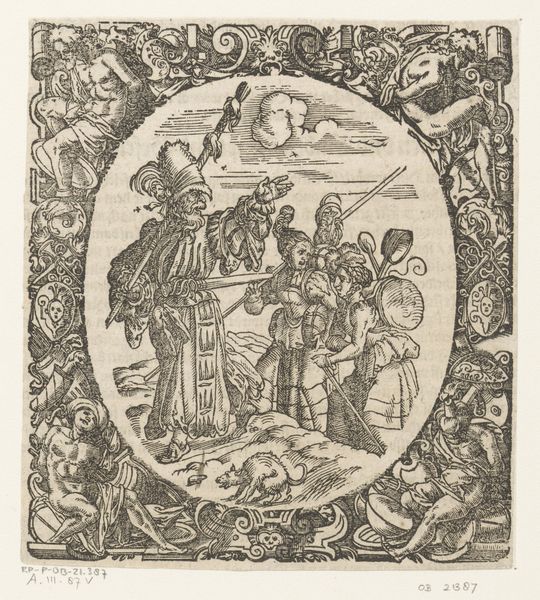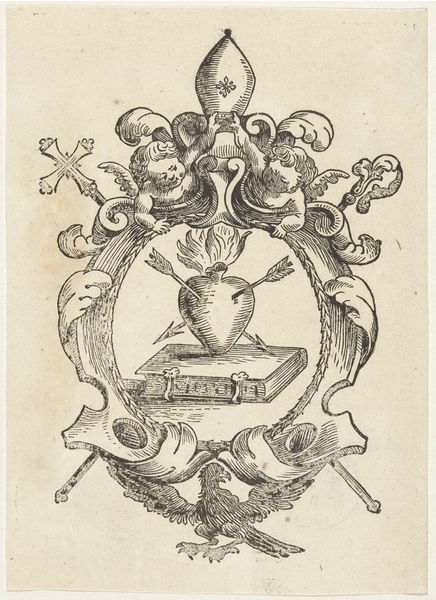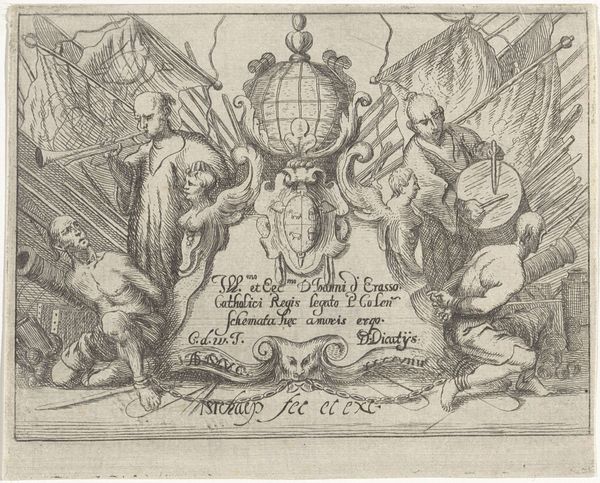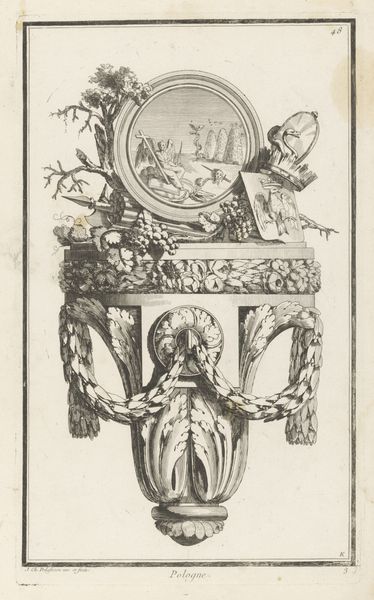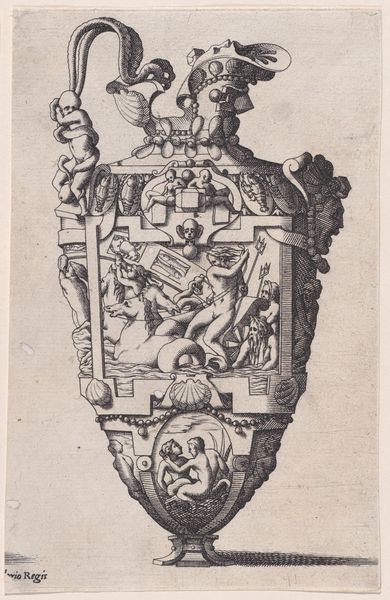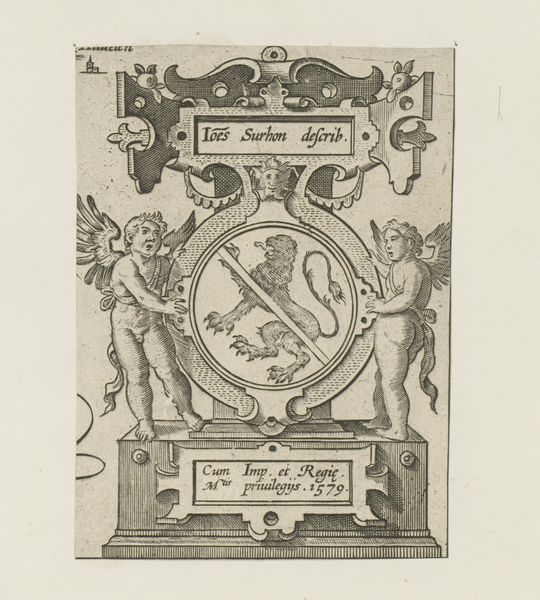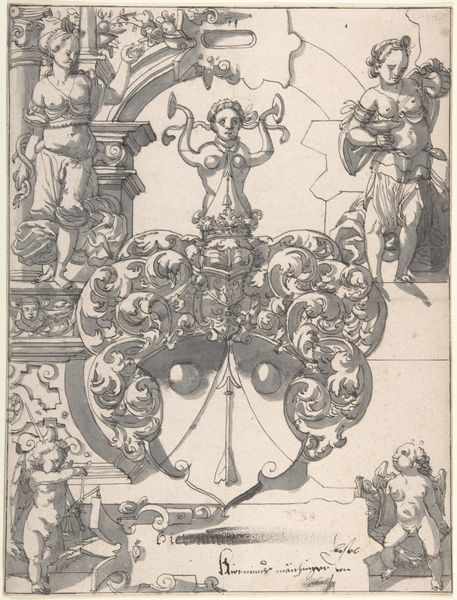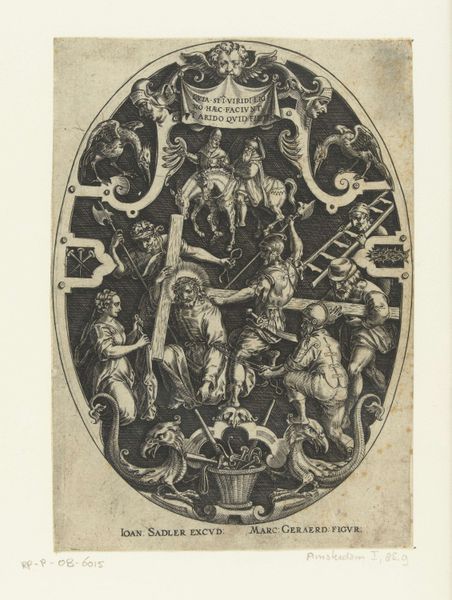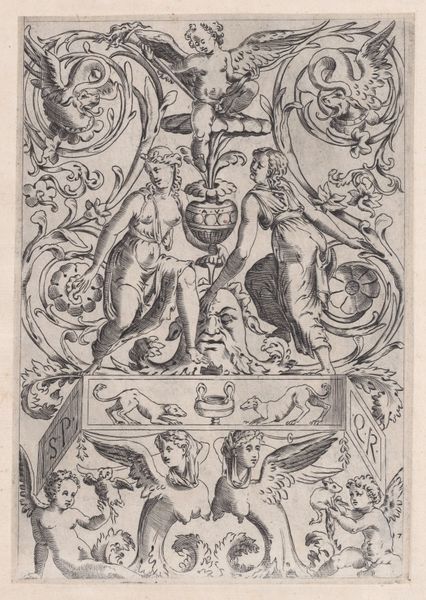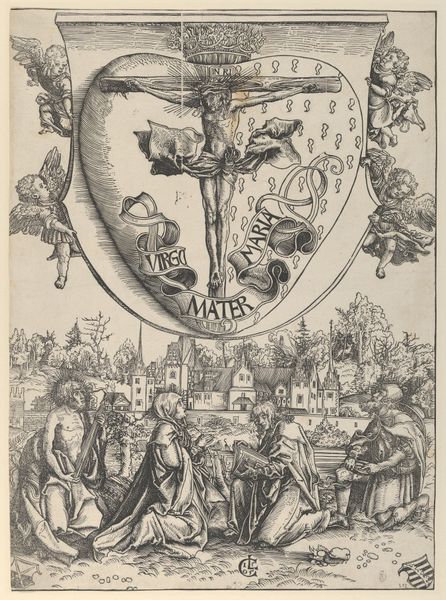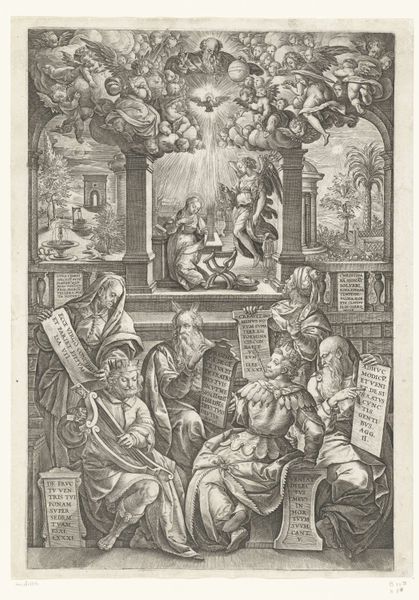
Dimensions: plate: 8.7 × 7 cm (3 7/16 × 2 3/4 in.) sheet: 10.6 × 8.7 cm (4 3/16 × 3 7/16 in.)
Copyright: National Gallery of Art: CC0 1.0
Barthel Beham created this bookplate of Hieronymus Baumgartner in the 16th century. It is an engraving on laid paper. During the Renaissance, bookplates signified not only ownership, but also the owner's identity and social standing. Hieronymus Baumgartner was a wealthy and influential member of 16th century Nuremberg society. This piece reflects the values and anxieties of the time. Symbols like the skull and hourglass serve as memento mori, reminders of mortality. The Hebrew inscription and Greek phrase add layers of meaning and reflect Renaissance Humanist interest in classical knowledge. At the heart of the print is a coat of arms, a visual representation of family lineage and noble status. The prominent display of such heraldry speaks to the importance of social identity and legacy during this era. Consider the emotional weight of these symbols: What did legacy mean when disease was rampant, and life expectancy much shorter?
Comments
No comments
Be the first to comment and join the conversation on the ultimate creative platform.

